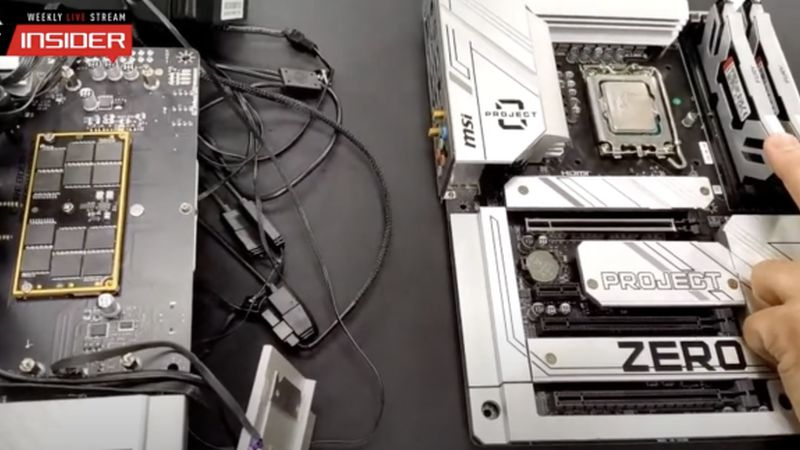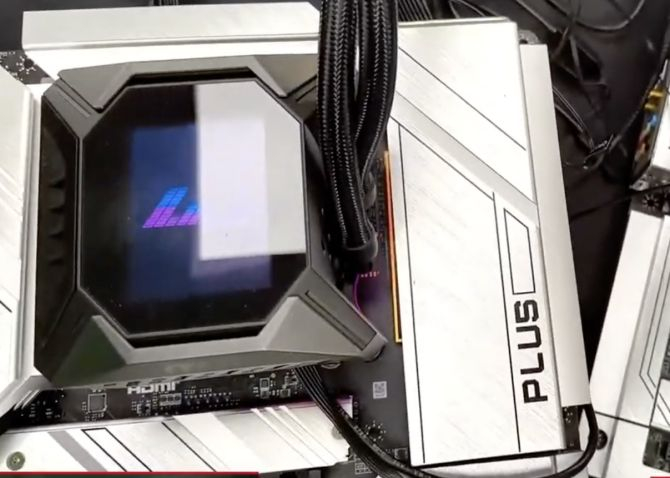Initially, the CAMM standard was promoted by Dell to replace SO-DIMM modules for laptops, but in its second generation, such memory is preparing to be registered in desktop systems, as MSI proved in its recent broadcast. Representatives of the Taiwanese brand showed prototypes of CAMM2 memory modules for desktop systems.

Image Source: MSI, ExtremeTech
The use of CAMM2 modules in a desktop system (pictured left) forces the manufacturer to seriously redesign the motherboard layout. The peculiarity of CAMM2 is that such a memory module is installed “flat” on the motherboard, and it needs a little more space on its surface than a pair of DIMM modules. But the only CAMM2 module provides memory operation in dual-channel mode, and from this point of view, some savings are observed. To install CAMM2 on the motherboard, you need to use a screwdriver, since it is screwed to it with screws through threaded posts.

If desired, CAMM2 memory modules can be equipped with a heat spreader, and even equipped with adjustable backlighting, but for this you will have to run a separate cable to the memory. This arrangement of the memory module to some extent improves the conditions of air circulation in the area of the processor socket, but because of this, the large 24-pin power connector of the motherboard has to be moved to another place. MSI placed it above the processor socket, in the “north” part of the motherboard. MSI representatives also emphasized that CAMM2 modules eliminate the disadvantage of DIMM modules, which, as capacity increased, lost rated performance. CAMM2 modules are cheaper to manufacture and provide faster performance. True, this is only true for conditions of mass production, and while desktop CAMM2 will remain a scarce commodity, you won’t have to count on low prices. Such memory may be installed in desktop systems by the end of the year, when manufacturers offer the next generation of motherboards.